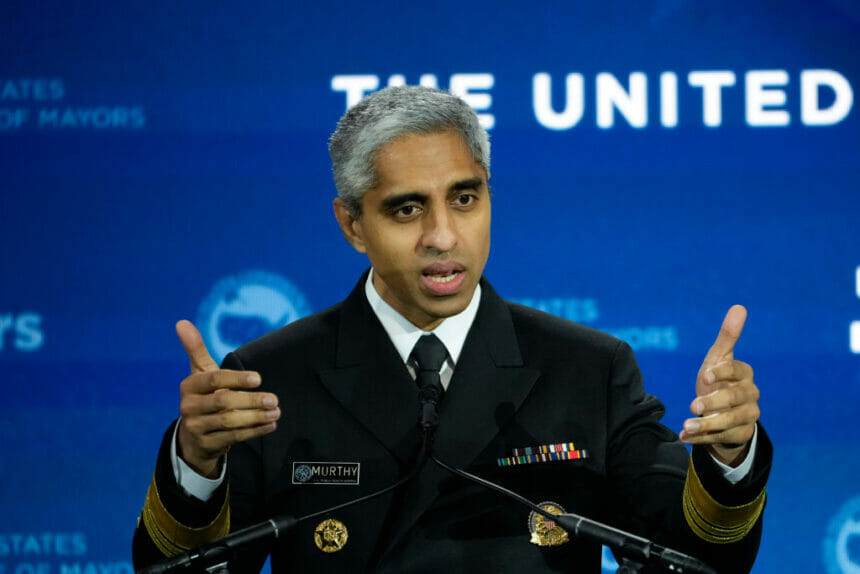The onslaught of mental health woes plaguing the U.S. in recent years has resulted in sharp increases in rates of anxiety and depression, burdening a healthcare system unable to keep up with the demand.
In response to the nation’s ongoing behavioral health crisis, U.S. Surgeon General Vivek Murthy has pinpointed a major culprit that isn’t often talked about — loneliness.
Mental health has long been considered taboo to discuss openly and in public and one can probably make the same argument about loneliness. However, Murthy has defined his latest stint as surgeon general with a focus on mental health and officially called loneliness a “public health threat” that needs to be addressed with policies and action on the individual, community and societal levels.
“Loneliness is far more than just a bad feeling — it harms both individual and societal health,” Murthy wrote in the advisory this week. “Given the profound consequences of loneliness and isolation, we have an opportunity, and an obligation, to make the same investments in addressing social connection that we have made in addressing tobacco use, obesity, and the addiction crisis.”
Murthy also opened up about his own struggles with loneliness and mental health throughout his life in a recent op-ed in The New York Times.
In it, he admitted to experiencing darkness and loneliness after his first stint as surgeon general ended, when he was “suddenly disconnected from the colleagues with whom I had spent most of my waking hours.” He then discovered that he had neglected many of his friendships and that even when he was with people, he was often disconnected and checking his phone or e-mail.
Murthy’s view is that the U.S. has become increasingly disconnected — spurred by the pandemic, rapid rises in technology like smartphones, remote work and telehealth. His public health declaration was also informed by a cross-country listening tour in which he spoke with Americans experiencing loneliness.
“People began to tell me they felt isolated, invisible, and insignificant,” Murthy said. “Even when they couldn’t put their finger on the word ‘lonely,’ time and time again, people of all ages and socioeconomic backgrounds, from every corner of the country, would tell me, ‘I have to shoulder all of life’s burdens by myself,’ or ‘if I disappear tomorrow, no one will even notice.’”
For Murthy, it was a “lightbulb moment.” He said he realized loneliness and so-called social disconnect was seeping into most Americans’ lives, leaving them with negative health impacts.
Those detrimental effects are backed up by years’ worth of science on the subject. Loneliness has been linked to a 50% increased chance of dementia, a 29% increased risk of heart disease and 32% higher risk of stroke, according to data from the Centers for Disease Control and Prevention. The health effects of loneliness are comparable to those that occur from smoking or obesity.
While it may be hard to pinpoint exactly how social connection has been fraying over time in the U.S., various statistics paint a picture of increasing isolation.
The surgeon general’s advisory noted that social isolation — measured by the time spent alone — rose steadily from 2003 to 2019. Social isolation spiked during 2020 as millions of Americans quarantined and socially distanced during the start of the COVID-19 pandemic, reaching an additional 24 hours a month of being alone.
In addition, the amount of time people spend with friends or other social connections has decreased over the last 20 years. In 2003, people were with friends for about an hour a day, or 30 hours a month, compared to only 20 minutes a day in 2020 — resulting in about 10 hours a month total.
Among young people between the ages of 15 and 24, that decrease was the most drastic: in-person friend time dropped from 150 minutes a day in 2003 to 40 minutes a day in 2020.
A similar shift is occurring since more Americans are simply living alone. People living alone now make up 29% of all households in 2022, compared to 13% in 1960.
We also know that social connection can be good for health, including mental health — people who frequently confided in friends or others about their lives were linked to having a 15% reduced risk of developing depression.
With all of this on the table, Murthy now wants to direct the U.S. public health system to make a concerted effort to change on both a community and societal level. The advisory outlines six key initiatives that would aim to “rebuild social connection” through all the fabrics of society.
The first initiative focuses on strengthening social infrastructure in local communities. That could mean developing an environment to encourage social connection and invest in local organizations that bring people together.
“Pro-connection public policies” are next — what Murthy deems a “connection-in-all-policies” approach across every sector. These range from transportation to nutrition and labor, with the goal of prioritizing social connection in all policy agendas.
Thirdly, Murthy wants the health sector to build up resources and support for social connection, from properly training providers to expanding public health interventions for people who may be experiencing severe social disconnect.
Technology will also play a role, though, and Murthy wants to find ways to reduce the harm from certain social media platforms that trigger isolation and depression, and instead invest in the outlets that may foster more social connection.
Finally, the U.S. should develop a national research agenda, gather research funding and raise public awareness about the issue, the advisory argued.
For a July 2024 article on insights from Hearst Magazines’ Mind Lab on mental health and wellness, click here.







